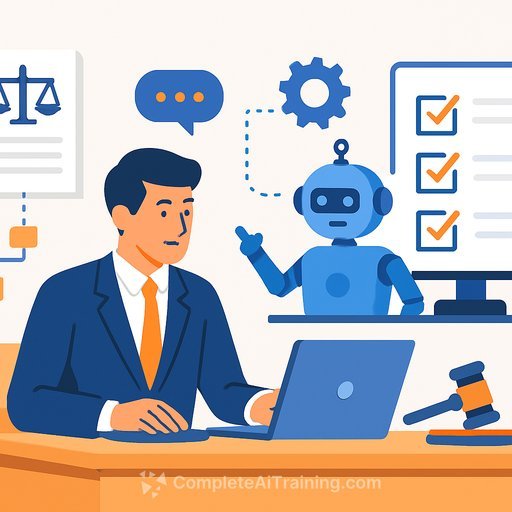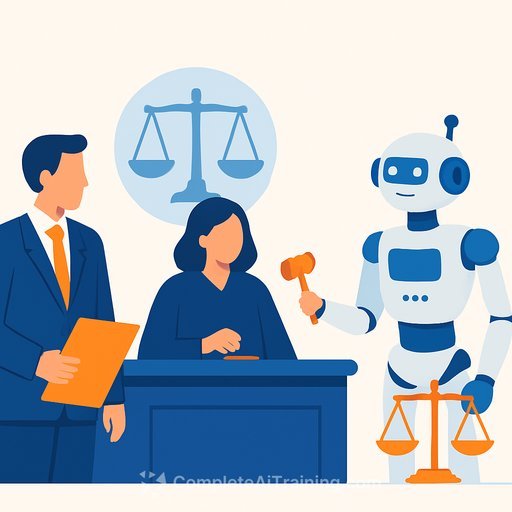How generative and agentic AI work together in professional-grade legal AI
Streamlining legal workflows through advanced AI collaboration
- Generative AI creates content such as drafts and summaries, while agentic AI executes multi-step tasks.
- Together they enable end-to-end workflows, from creation through execution and follow-through.
- Professional-grade AI matters in legal work: domain-specific training, high accuracy, secure integrations, and human-in-the-loop oversight.
- Key selection criteria: transparent workflows, legal-grade data grounding, security compliance, and integration with tools like Microsoft 365.
AI should augment legal expertise, not replace it. Two types of systems are changing how work gets done: generative AI that creates content, and agentic AI that takes action with minimal back-and-forth.
GenAI vs. agentic AI: different jobs, shared outcomes
GenAI. Built to create. It turns prompts into text, summaries, or code. In legal practice, it drafts documents, condenses case law, and kickstarts research. It accelerates content creation, but it usually stops short of completing the workflow.
Agentic AI. Built to act. It plans and executes multi-step tasks, adapts to changes, interfaces with systems, and keeps moving without constant input. In practice, it can file documents, update matter records, sync with calendars, and push updates to your DMS or CRM.
Agentic systems rely on a controller that understands legal workflows and can reroute when tools fail or facts change. Crucially, they are not closed-loop: human review and approval remain core. You stay in charge of judgment, strategy, and final calls.
Why both matter in legal workflows
Most legal tasks span creation and execution. GenAI produces the draft; agentic AI finishes the job. That handoff turns isolated outputs into results you can file, share, and track.
- Case law research: GenAI summarizes relevant authorities; agentic AI organizes by jurisdiction, compares holdings, and compiles a report for review.
- Contract analysis: GenAI flags clauses and risks; agentic AI compares versions, tracks changes, and updates compliance checklists.
- Client engagement: GenAI drafts proposals or emails; agentic AI sends via CRM, schedules follow-ups, and updates timelines.
The outcome: integrated workflows with better consistency, less admin load, and capacity to handle more matters without sacrificing quality.
What "professional-grade" actually means
Consumer tools are impressive, but legal work demands higher standards. Professional-grade systems are trained on legal content, emphasize accuracy, and integrate securely with your stack.
- Efficiency: Routine tasks move off your plate so you can focus on strategy and client communication.
- Quality: Large volumes get analyzed quickly, reducing errors and tightening outputs.
- Productivity: With repetitive steps automated, teams can take on more work or go deeper on complex matters.
What to look for in a legal AI platform
- Transparent workflows: Clear reasoning, visible steps, and auditability.
- Domain-specific data: Training grounded in legal sources, not just general web text.
- Security and compliance: Controls aligned with frameworks such as SOC 2 and privacy rules like the GDPR.
- Human-in-the-loop: Review, approval, and override baked into the UX.
- Compatibility: Smooth integration with Microsoft 365 and your DMS, eDiscovery, or CRM.
- Evaluation benchmarks: Tested against relevant legal tasks and scenarios, with published results.
- Scalability and support: Reliable onboarding, training, and responsive help as your usage grows.
Red flags to avoid
- Vague documentation or hidden methods.
- Poor integrations or "export only" workflows.
- No evidence of legal-specific training or evaluation.
- Little to no user control over steps or outputs.
- Unclear data usage or retention policies.
- Overreliance on a single LLM without verification or grounding.
Professional-grade AI in action
Combined GenAI and agentic systems remove friction end to end: draft, review, file, notify, update records-without manual relay between tools. You get consistent execution with human oversight where it counts.
Platforms like CoCounsel Legal demonstrate how creation and execution can live in one environment, built for legal work and tested for accuracy. The result is faster turnarounds, clearer accountability, and fewer errors.
Next steps
If you're evaluating solutions, start with one workflow-motion drafting, intake, or contract review. Map the steps, define review points, and test how GenAI hands off to agentic actions. Measure time saved, error rates, and user satisfaction before expanding.
For structured upskilling across roles, explore curated AI training tracks by job function at Complete AI Training.
To dig deeper into accuracy and content grounding, download the white paper: Trusted content in the AI era: How to maximize accuracy.
Your membership also unlocks:






